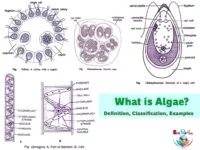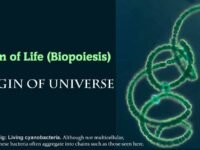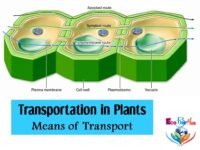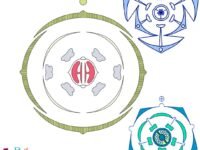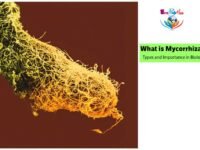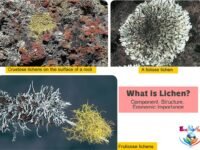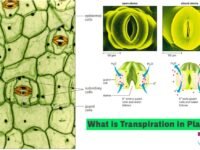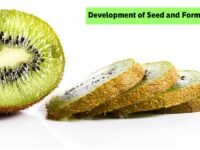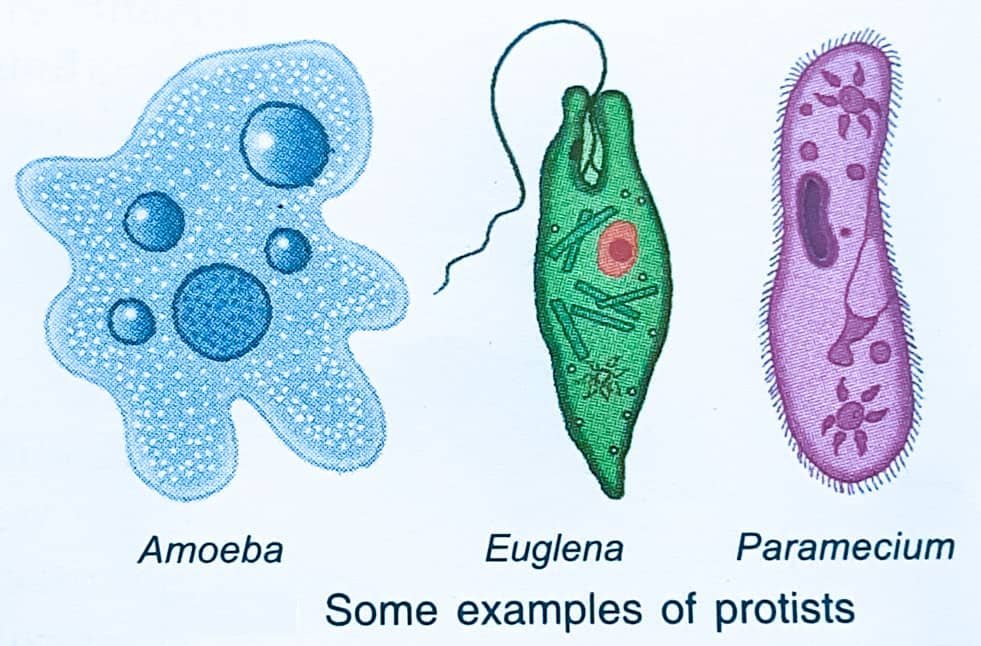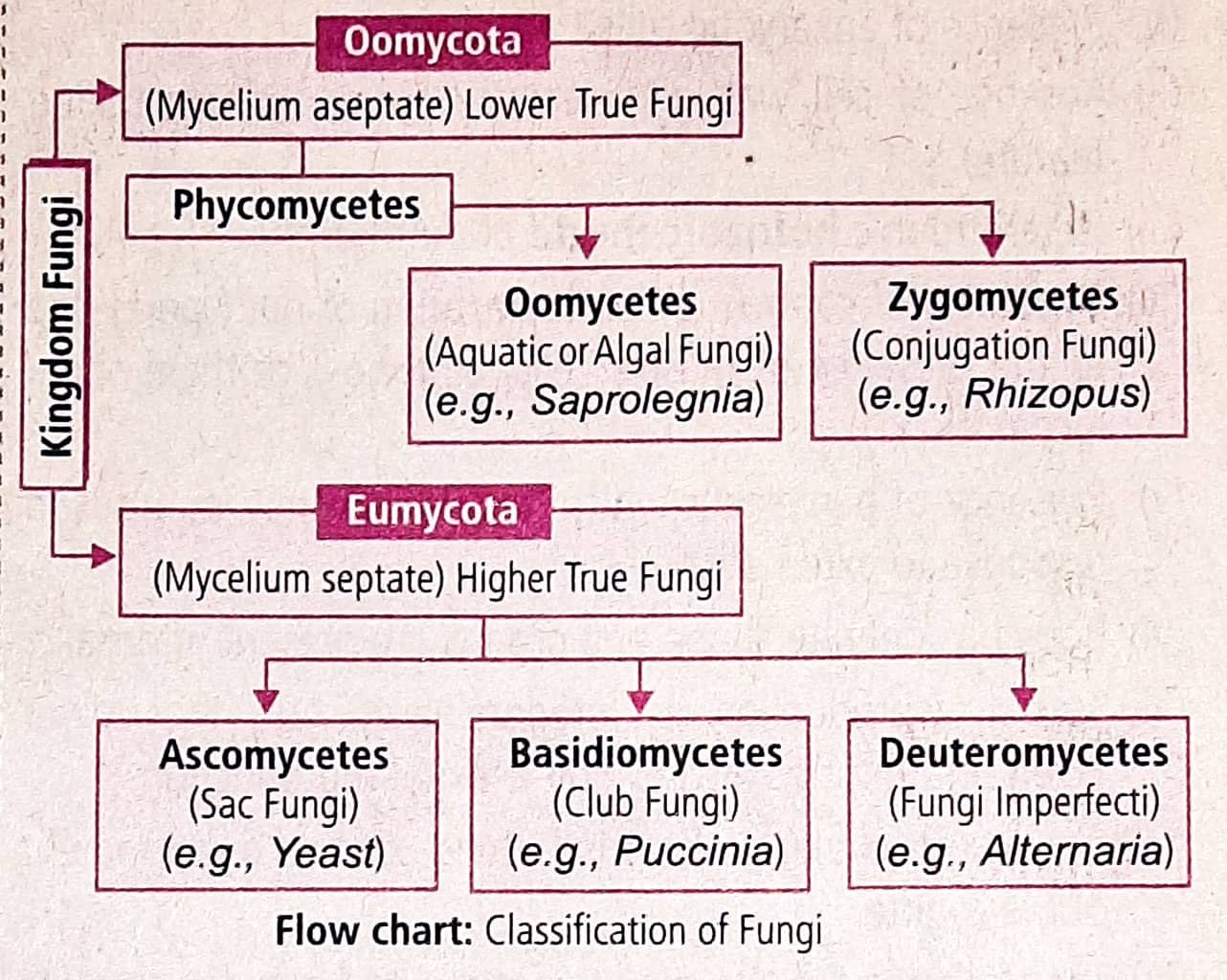Biological classification is the scientific procedure of arranging organisms into groups and subgroups on the basis of their similarities and dissimilarities and placing the groups in a hierarchy of categories.
The branch of biology concerned with biological classification is called taxonomy.
TABLE OF CONTENTS
PURPOSE OF BIOLOGICAL CLASSIFICATION
A proper system of classification is a must because of the following reasons:
(i) Every organism cannot be studied. Biological classification proves useful for the purpose as the study of one or two organisms of a group gives sufficient information about the essential features of the group. Biological classification helps to know the characteristics of the whole group of organisms by studying only a few members of that group.
(ii) Biological classification helps in quick and easy identification of a newly found organism which otherwise is a very tedious process.
(iii) The organisms of past and inter-relationships between different groups of organisms can be studied properly only with the help of biological classification.
(iv) Biological classification helps in understanding the phylogeny and evolutionary history of organisms.
(v) Biological classification provides knowledge about the origin and the genetic relationship among living beings.
OBJECTIVES OF BIOLOGICAL CLASSIFICATION
(i) To identify and describe all the possible types of species.
(ii) To arrange the species in various categories on the basis of their similarities and dissimilarities.
(iii) To evolve a truly natural or phylogenetic system that should indicate the origin and evolution of the species.
(iv) Helping in easy identification of organisms.
(v) To help in knowing the relationships amongst different groups of organisms.
(vi) To supply vital information needed for all the branches of Biology.
TYPES OF BIOLOGICAL CLASSIFICATION
Since the dawn of civilization, there have been many attempts to classify living organisms but the criteria used then was not scientific like organisms that provide clothes, and food, etc. Aristotle (c 350 BC) was the first to attempt a more scientific basis of classification. Organisms were classified into plants and animals.
But there were many organisms that did not fall into either plants or animals category. This gave rise to more refined attempts of biological classification.
There are three main types of biological classification – artificial classification, natural classification, and phylogenetic classification.
● Artificial System of Classification
An artificial system of classification uses one or two morphological characters for the grouping of organisms, which may not have any phylogenetic significance. Some artificial systems have used habit and habitat for this purpose.
The artificial system of classification was first proposed by Theophrastus (370-285 BC) who classified plants as Trees, Herbs and Shrubs.
Aristotle (c 350 BC) divided the animals into two categories on the basis of the presence or absence of red coloured blood: Enaima (with red blood) and Anaima (without red blood). Aristotle also classified animals on the basis of their habitat: aquatic (e.g., fish, whale), terrestrial (e.g., reptiles, cattle) and aerial (e.g., birds, bat).
Pliny the Elder (23–79 A.D.) used an artificial system of classification for dividing both plants and animals into land, air and water. Pliny distinguished animals into flight and nonflight ones. Flight animals included bats, birds and insects.
Linnaeus also put forward an artificial system of plant classification on the basis of the numerical strength of sex organs into 24 classes like monandria, diandria, polyandria, didynamia, monoecia, cryptogamia, etc. Linnaeus’ system of classification (based on sexual characters) is also termed a sexual system of classification.
Andrea Caesalpino’s classification (in ‘De plantis libri, 1583) and John Ray’s classification, are all artificial systems of classification. John Ray first introduced the terms, monocotyledonous and dicotyledonous; in his book ‘Historia Plantarum‘.
Drawbacks of Artificial System of Classification
The artificial system is easier to practise in the field. But it has several drawbacks like:
(01) It does not study homology but is mostly based on convergence.
(02) This system employs one or two morphological and ecological traits which have no bearing on the actual status of taxa.
(03) The artificial system of classification does not reflect any natural relationship between organisms and do not show a distinct evolutionary line. For example, some characters in organisms may be more advanced than their relatives while in others they may be primitive.
(04) Organisms of different affinities have been placed in the same group, e.g., bats, birds and insects all have been placed under flight animals. Linnaeus’ monandria includes both dicots and monocots while his didynamia has both labiatae as well as gymnosperms.
(05) Some characters used in the artificial system of classification get changed with changes in the environment like biennial and annual habit of radish, large and small leaves.
● Natural System of Classification
Natural system of classification employs those characters which are relatively constant. They include morphological characters, anatomical characters, cytological characters, physiology, ontogeny or development, reproduction, cytochemistry and biochemistry, experimental taxonomy, etc.
This system brings out the natural relationship with the help of all the available physiological data including fossils.
D. de Jussieu (1699 – 1776) was not satisfied with Linnaeus’ artificial system of classification and modified it into a natural one. He divided the flowering plants into groups on the basis of monocots, dicots, ovary positions, presence or absence of petals.
The characteristics are helpful in bringing out a maximum number of similarities in a group and comparable differences with other groups of organisms. For example, mammals are characterised by the presence of mammae, hair, vivipary, 4-chambered heart, denucleated erythrocytes and warm-blooded nature. Birds possess wings, feathers, pneumatic bones, ovipary, 4-chambered heart, nucleated erythrocytes and warm-blooded nature. Similarly, fishes do not possess limbs but fins. Their body is covered with scales. Respiration is through gilts. The heart is two-chambered. They are cold-blooded.
In the natural system of classification, homology is brought out through the study of internal and external characters.
Homology is the relationship of comparable structures having been derived from a common form. For example, the forearm of different land vertebrates has the same pentadactyl constitution. It is externally much different in different organisms to perform different functions like grasping in human beings, running in horses, swimming in whales, flight in birds or bats. Homology shows how each organ or structure has evolved in different groups to suit different functions.
Homology is studied in the case of biochemical as well. Molecular homology is the finding of relationships of comparable molecules like DNA, RNA and proteins by studying their similarities and dissimilarities. Even certain biochemicals occur in specific groups, e.g., betacyanin is found in beet-root and related plants. The branch of biology that utilizes the study of chemicals in classification is called chemotaxonomy. Chromosomes or karyotypes are also important for knowing natural relationships.
In the nineteenth century, scientists relied more upon morphological and anatomical characters than other characters.
George Bentham and J.D. Hooker (1862–1883) gave the most important natural system of classification of Angiosperms. This was published in ‘Genera Plantarum‘. These days a natural system of classification not only brings out natural relationships, but also studies the evolutionary tendencies and phylogeny with the help of all the available data including fossils.
Advancement of Natural System over Artificial System
The natural system of classification is certainly better than any artificial system of classification because
● They stress on a comparative study of anatomy, cytology, biochemistry, genetics, ontogeny, etc. while these fields are ignored in artificial systems:
● Natural system uses several morphological characters for the grouping of organisms while artificial systems often utilize one or two morphological traits only.
● This system brings out an idea of natural relationships among organisms and it places only related organisms in a group.
● The system prevents the coming together of unrelated organisms.
● The system indicates phylogenetic relationships and the origin of different taxa.
Drawbacks of Natural System of Classification
The natural systems do not give any idea about the evolutionary status of organisms and do not consider the fossil evidence for classification.
Table 1: Differences between Artificial and Natural Systems of Classification
| Sl. No. | Artificial System | Natural System |
| 01. | The system is highly useful in the field for the quick identification of organisms. | A natural system often employs artificial keys for quicker identification in the field because the system as such is difficult to operate in the field. |
| 02. | Artificial system often utilizes one or two morphological traits. | The system employs several morphological characters for the grouping of organisms. |
| 03. | An artificial system may use habit and habitat as criteria for grouping. | A natural system never uses habit and habitat as criteria for classification. |
| 04. | The system does not employ characters from anatomy, cytology, cytochemistry, biochemistry, genetics, ontogeny, etc. for the grouping of organisms. | The system employs all these informations. |
| 05. | Homology is never studied. | It studies homology in all characters, including morphology, anatomy, cytotaxonomy, molecular systematics, etc. |
| 06. | The system gives no information about natural relationships or phylogeny. | This system gives information about both natural relationships and phylogeny. |
| 07. | It often results in the placing of unrelated organisms in a group. | There is little chance of placing of unrelated organisms in a group. |
| 08. | Related organisms often get separated into different groups. | Related organisms are placed in the same group. |
● Phylogenetic System of Classification
Classification based on the evolutionary and genetic relationships among organisms is called the phylogenetic system of classification. It is based on the evolutionary concept from Darwin’s book – On the Origin of Species by Means of Natural Selection: The Preservation of Favoured Races in the Struggle for Life (1859). It reflects the true relationships among the organisms.
In this system, organisms belonging to the same taxa are believed to have common ancestry and may be represented in a family tree called a cladogram.
The phylogenetic system was first proposed by Adolph Engler and Karl Pranti in 1887 in the 23 volumes of the book ‘Die Naturlichen Pflanzen Familien‘. They considered the polyphyletic origin of angiosperms from a hypothetical gymnospermic ancestor. Monocots were considered primitive to dicots.
John Hutchinson (1959), a famous English botanist and former director of Royal Botanical Garden, Kew, England gave his phylogenetic system of classification in two volumes of the book ‘The Families of Flowering Plants‘. His classification was based on 24 principles of phylogenetic classification. Hutchinson described the monophyletic origin of angiosperms.
Armen Takhtajan (1966), a leading plant taxonomist of Russia worked on phytogeography, origin and phylogeny of flowering plants. He published the ‘Origin of Angiospermous Plants‘ with phylogenetic details of the angiosperms describing a monophyletic origin and evolution of angiosperms from ancient gymnosperms.
Arthur Cronquist, a leading American taxonomist from New York Botanical Garden along with Takhtajan and Zimmerman (1966), produced the most elaborate classification of angiosperms on the basis of phylogeny in ‘The Evolution and Classification of Flowering Plants‘. Cronquist called flowering plants as Magnoliophyta (dicotyledons) and Liliopsida (monocotyledons).
Robert Thorne, in his phylogenetic classification of flowering plants led much emphasis on the phytochemical approach thereby explaining the monophyletic origin of angiosperms.
Drawbacks of Phylogenetic System of Classification
It is less practical because organisms have both primitive and advanced characters together and fossil records are not available in every case.
Table 2: Differences between Natural and Phylogenetic Systems of Classification
| Sl. No. | Natural System | Phylogenetic System |
| 01. | The system is based on resemblances and differences amongst organisms. | It is based on the possible evolution of different traits. |
| 02. | There is the little role of fossils. | Fossils play a vital role in the elucidation of evolutionary relationships. |
| 03. | It is more practicable. | It is less practicable because organisms have both primitive and advanced characters and the fossil record is not available in every case. |
● Phenetic Classification (Gk. phainein – to appear)
It is a system of phylogenetic classification which is based on affinities, similarities and dissimilarities of characteristics present in the present-day organisms without searching for the evolution and diversification of these traits in their fossil ancestors.
The classification obtains supporting evidence from four major branches of the taxonomy- cytotaxonomy, chemotaxonomy, numerical taxonomy and cladistic taxonomy.
(01) Cytotaxonomy
Classification based on information provided by comparative cytological studies, the number of chromosomes, structure and meiotic behaviour of chromosomes.
It is known that fewer and larger chromosomes have been formed in many cases by the fusion of smaller chromosomes. Herbaceous plants have larger chromosomes than woody plants. Naturally, herbaceous plants are more advanced than woody plants.
In many genera, the same basic chromosome number has been found in different species, e.g., 12 in Solanum species and 9 in Chrysanthemum species. Human beings have 46 chromosomes, while apes have 48. A reduction in the number of chromosomes has been achieved through whole arm translocation between two acrocentric chromosomes. Apparently, humans have evolved from ape-like ancestors. The pairing of chromosomes during meiosis helps to bring out relationships between species.
(02) Chemotaxonomy (Biochemical Systematics)
Classification based on characteristics of various chemical constituents of organisms like amino acids, proteins, DNA sequences, alkaloids, crystals, betacyanins, etc.
The chemical constituents of plants are generally specific and stable. They do not change easily. Ancient medical men based their identification of the plants on fragrance, taste and other chemical characteristics, crystals of calcium oxalate like raphides are restricted to 35 families. Similarly, certain alkaloids are restricted to a few related families, e.g., benzylisoquinoline alkaloid in Papaveraceae, Berberidaceae and Ranunculaceae.
Table 3: Differences between Cytotaxonomy and Chemotaxonomy
| Sl. No. | Cytotaxonomy | Chemotaxonomy |
| 01. | It is a taxonomy based on comparative cytological studies. | It is a taxonomy based on the characteristics of chemical constituents. |
| 02. | The presence of a similar banding pattern of chromosomes indicates close similarity. | The presence of certain specific chemicals in certain groups of organisms shows close relationships. |
| 03. | Lineage can be traced with the help of chromosome studies, e.g., humans from apes. | DNA analysis and protein tests are useful in knowing relationships. |
(03) Numerical Taxonomy
It evaluates resemblances and differences or primitiveness and advancement through statistical methods based on a large number of characters obtained from all disciplines of biology.
This is followed by assigning them numbers and codes of computer like plus (+), minus (=), 6 (data not available), followed by computer analysis. It establishes the numerical degree of relationship among individuals. The relationship or affinity values are then used to erect taxonomic categories. However, its effectiveness depends upon the judgement of the biosystematist in selecting characters and current knowledge about them.
(04) Cladistic Taxonomy (Gk. clados – sprout)
Classification based on similarity due to common phylogeny or origin from a common ancestor.
These are two types of characters, ancestral and derived:
● Ancestral characters are traits of the basic body design, which would be present in an entire group.
● Derived characters are those traits whose structures and functions differ from those of ancestral characters. They appear during evolution and cause the formation of new subgroups. One or more derived characters would be shared by an entire subgroup.
In cladistic taxonomy (cladistics), each evolutionary step produces a branching. All the members of a branch possess the derived character which would be absent below the branch point. The arrangement of organisms on the basis of their shared similar or derived characters, that differ from ancestral characters, will produce a phylogenetic tree called cladogram.
TYPES OF BIOLOGICAL CLASSIFICATION
All the living organisms were classified under the largest taxonomic hierarchy of kingdom, by various experts at various times. The biggest group or category in classification is the kingdom.
Carl von Linnaeus introduced four categories for classification – class, order, genus and species. In addition to these, an optional category variety was also created. Later on, family, phylum and kingdoms were also added. In this way total of seven major categories were created in classification. The hierarchy of these categories is as under –
1. Kingdom
2. Phylum (for animals) / Division (for plants)
3. Class
4. Order
5. Family
6. Genus
7. Species
Depending upon the type of system of classification, organisms are classified into two kingdom, three kingdom, four kingdoms, five kingdom, six kingdom and now into eight kingdoms.
■ Two Kingdom Classification (Before 1969)
This system was proposed by the famous Swedish naturalist, Carl Von Linnaeus (the father of taxonomy) in 1758.
All the organisms were classified into two kingdoms – Plant kingdom or Plantae
The autotrophic organisms were included in the Plantae group. Animalia consisted of non-photosynthetic heterotrophic group of organisms.
➢ The members of kingdom plantae are plants, They are distinguished by (i) presence of cell wall, (ii) occurrence of inorganic crystals in the cells, (iii) presence of central vacuole in the cell, (iv) absorption of inorganic nutrients from outside, (v) well defined growing points with unlimited growth, (vi) absence of excretory organs, sense organs and nervous system, (vii) ability to manufacture food due to presence of chlorophyll— holophytic autotrophic nutrition, (viii) reserve food as starch, (ix) occurrence of branches and less definite shape, (x) absence of locomotion, (xi) absence of muscular tissue, (xii) presence of external organs and (xiii) slow response to external stimuli.
➢ Members of kingdom animalia possess the opposite characters as (i) absence of cell wall, (ii) inorganic crystals are not present in their cells, (iii) absence of central vacuole in the cell, (iv) ingestive (holozoic) type of nutrition, (v) well defined growing points absent, growth limited, (vi) presence of excretory organs, sense organs and nervous system, (vii) inability to manufacture food due to absence of chlorophyll, (viii) reserve food as glycogen, (ix) absence of branches and having definite shape, (x) presence of locomotion, (xi) muscular tissue present, (xii) organs internal and (xiii) quick response to external stimuli.
Demerits
Several objections have been raised against this two kingdom classification. They are:
● Euglena and some other organisms exhibit characters of both plants and animals. For example, Euglena has both holophytic and saprobic nutrition (mixotrophic nutrition).
● Bacteria neither match up with plants nor with animals in cellular structure.
● Fungi which are non-photosynthetic had been grouped as plants.
● Sponges and corals are non-motile and sessile animals with plant-like branching.
● Slime Moulds, a group of fungi, are wall-less in the vegetative phase when nutrition is holozoic. They develop cell walls in the reproductive phase. Slime moulds can neither be placed in fungi, nor plants. This group is popularly called an animal group which is studied by mycologists.
● Lichens constitute a peculiar group of dual organisms which are formed by an association between an alga and a fungus. They have no plant character, neither any animal character.
● Viruses have a volume of 10-6 to 10-3 µm3. Prokaryotes have a volume range of 0.2 to 10 cubic µm3 while the average eukaryotic cell has a volume between 1000-10000 µm3. All of them cannot occur in a single kingdom.
● Groups of unicellular algae (euglenoids, diatoms and dinoflagellates) and protozoa show a sufficient degree of resemblance.
■ Three Kingdom Classification
This system of classification was proposed by the German botanist, Ernst Haeckel in 1866.
The third kingdom – Protista, including unicellular eukaryotes like protozoan and algae was introduced. Later on, fungi and multicellular algae were taken out from the group so that kingdom Protista came to have only unicellular organisms divided into three kingdoms: Kingdom Plantae, Kingdom Protista and Kingdom Animalia.
Demerits
Bacteria and microbes were not properly classified; rather they were included in the plant kingdom.
■ Four Kingdom Classification
This system of classification was proposed by Copeland in 1956.
With the advent of the electron microscope, it became clear that bacteria and microbes have a different nuclear structure as compared to others. They are Prokaryotes in contrast to others which have a true nucleus and are called eukaryotes. Copeland (1956) created a separate kingdom of monera (or Mycota) for them.
The four kingdoms were: Monera, Protista, Plantae (or Metaphyta) and Animalia (or Metazoa).
● Monera included prokaryotic organisms with an incipient nucleus, like bacteria.
● Protista included unicellular eukaryotes like protozoa, unicellular algae, etc.
● Plantae / Metaphyta included photosynthetic multicellular organisms.
● Animalia / Metazoa included non-photosynthetic multicellular organisms.
Demerits
Fungi which are non-photosynthetic were included in kingdom Plantae.
■ Five Kingdom Classification (From 1969 to 1990)
This system of classification was proposed by the American taxonomist, Robert H. Whittaker in 1969. As the viruses are on the borderline of living and nonliving, they have been left out.
It is based on the following features:
(i) Complexity of cell structure: prokaryotic and eukaryotic.
(ii) Complexity of body structure or structural organisation: unicellular and multicellular.
(iii) Mode of nutrition, which is divergent in multicellular kingdoms – photoautotrophy in plantae, absorptive heterotrophy in fungi and ingestive heterotrophy in animalia. Photoautotrophic nutrition is also called holophytic nutrition while absorptive heterotrophy is known as holozoic nutrition. Absorptive heterotrophy is saprobiotic (= saprophytic) nutrition.
(iv) Ecological lifestyle: producers (plantae), decomposers (fungi) and consumers (animalia).
(v) Phylogenetic relationships.
Whittaker’s five kingdoms are Monera, Protista, Plantae, Fungi and Animalia.
● Kingdom Monera: Prokaryotic bacteria and blue-green algae.
● Kingdom Protista: Unicellular, eukaryotic, autotrophic and heterotrophic organisms, like protozoans and algae.
● Kingdom Fungi: Multicellular nongreen, saprophytic plants, the fungi.
● Kingdom Plantae: All multicellular green plants and advanced forms of algae.
● Kingdom Animalia: All multicellular eukaryotes with the holozoic or ingestive mode of nutrition. This consisted of the motile and sessile animals.
Table 5: Comparative account of characteristics of the Five Kingdoms
| Sl.No. | Characters | Monera | Protista | Fungi | Plantae | Animalia |
| 01. | Cell type | Prokaryotic | Eukaryotic | Eukaryotic | Eukaryotic | Eukaryotic |
| 02. | Cell Wall | Non-cellulosic (Polysaccharide + Amino Acid) | Present in some (Various types) | Present (Non-cellulosic) | Present (Cellulose) | Absent |
| 03. | Chloroplast | Absent | Present in some | Absent | Present | Absent |
| 04. | Mitochondria | Absent | Present | Present | Present | Present |
| 05. | Nuclear Membrane | Absent | Present | Present | Present | Present |
| 06. | Tissue or Multicellularity | Absent | Absent | Present but limited | Present in all forms | Present in all forms |
| 07. | Motility | Bacterial flagella, gliding or non-motile | Cilia, Flagella, ameboid or contractile fibrils | Cilia, Flagella in some, absent in most of the forms | Cilia and Flagella in lower forms, absent in most of the forms | Cilia and Flagella, contractile fibrils |
| 08. | Mode of nutrition | Autotrophic (chemosynthetic and photosynthetic) and heterotrophic (saprophytic and parasitic) | Autotrophic ( photosynthetic) and heterotrophic | Heterotrophic (Saprophytic and parasitic) | Autotrophic ( photosynthetic) | Heterotrophic (Holozoic, Saprophytic, ingestion etc.) |
| 09. | Reproduction- means of genetic recombination | Conjugation Transduction Transformation or none | Syngamy and meiosis, conjugation or none | Fertilization and meiosis, dikaryosis or none | Fertilization and meiosis | Fertilization and meiosis |
| 10. | Nervous system | Absent | Primitive for conducting Stimuli | Absent | Absent | Present, often complex |
Advantages of Five Kingdom Classification
(01) Separation of prokaryotes in a separate kingdom of Monera is a wise step because prokaryotes differ from all other organisms in their genetic, cellular, reproductive and physiological organisation.
(02) Many transitional or intermediate forms are present in the unicellular eukaryotes which had been included both amongst plants and animals. The separation of unicellular eukaryotes into kingdom Protista has removed this anomaly.
(03) Fungi have never been related to plants. They have their own biochemical, physiological and structural organisation. The separation of fungi into a separate kingdom was long overdue.
(04) The five kingdom classification is based on levels of organisation and nutrition, which evolved very early and became established in later groups that are existing today.
(05) In this classification, animal and plant kingdoms are more homogeneous than they are in two-kingdom classification,
(06) It has tried to bring out phylogenetic relationships even amongst the primitive forms.
Drawbacks of Five Kingdom Classification
(01) In real terms the phylogenetic system cannot be established till all the distinct evolutionary tendencies are separated, This is not possible at the lower level. For example, certain green algae are known to obtain hydrogen from sources other than water like photosynthetic bacteria. Similarly, Euglena can be photosynthetic as well as saprotrophic. Its relatives can have absorptive as well as the ingestive type of heterotrophic nutrition.
(02) A distinction between unicellular and multicellular organisms is not possible in the case of algae. It is because of this that unicellular green algae have not been included in kingdom Protista by Whittaker.
(03) Each group has so many diversities that it is difficult to keep them together. For example, monera and protista contain both walled and wall-less organisms, photosynthetic and nonphotosynthetic organisms, unicellular and filamentous or mycelial organisms.
(04) Viruses have not been included in this system of classification.
(05) Archaeobacteria differ from other bacteria in structure, composition and physiology.
(06) Mycoplasmas are quite different from bacteria where they have been placed along with prokaryotes.
■ Six Kingdom Classification
This system of classification was proposed by Carl Woese et al. in 1990.
In this system, the Kingdom Monera is divided into Archaebacteria
The kingdoms were: Archaebacteria, Eubacteria, Protista, Fungi, Plantae and Animalia.
■ Eight Kingdom Classification
In eight kingdom classification systems were: Archae-bacteria, Eubacteria, Archezoa, Chromista, Protozoa, Fungi, Plantae and Animalia.
FIVE KINGDOM SYSTEM: THE MOST ACCEPTED
Kingdom 1: Monera (Kingdom of Prokaryotes)
Examples
The Kingdom Monera consists of prokaryotic organisms like eubacteria or true bacteria and archaebacteria.
Characteristic features
(i) Monerans are basically unicellular (monos – single) prokaryotes, cosmopolitan and contain the most primitive of living forms. Along with fungi, they are decomposers and mineralisers of the ecosystem.
(ii) The cells are microscopic (0.1 to a few microns in length).
(iii) Genetic material is not organised into a nucleus.
(iv) DNA is naked, i.e., it is not associated with histone proteins. DNA remains freely suspended in the cellular cytosol. It is called nucleoid or incipient nucleus. It is equivalent to a single chromosome.
(v) All membrane bound cell organelles are absent, e.g., mitochondria, lysosomes, spherosomes, Golgi bodies, plastids, etc.
(vi) The plasma membrane invaginates to form respiratory structures called mesosome, and photosynthetic structures called chlorosome. They contain respiratory and photosynthetic pigments respectively.
(vii) The cell wall is generally present. It is principally made of peptidoglycan (a heteromolecular fibrous macromolecule which is a combination of amino acids and sugars that surrounds the cell like a network), teichoic acid and Braun’s lipoprotein. In archaebacteria the cell wall is proteinaceous and flexible.
(viii) Moneran cells have 70S type ribosomes.
(ix) Monerans multiply or reproduce asexually, as they lack true sexual reproduction. They are incapable of gametogenesis but genetic recombination is due to conjugation, transformation or transduction. These processes are sometimes regarded as sexual reproduction.
(x) The cellular division involves amitosis, which does not involve the intricate mitotic machinery of spindle apparatus formation.
(xi) The principle hereditary material is a circular DNA called the nucleoid. There may be other accessory circular DNA molecules present in a moneran cell, which are called plasmids and episomes.
(xii) They are varied in their nutrition – saprobic, parasitic, chemoautotrophic, photoautotrophic and symbiotic. The photoautotrophs include both aerobes and anaerobes.
(xiii) The flagella, if present, are single-stranded instead of being 11 stranded in eukaryotes. They are formed by a protein called flagellin.
(xiv) Some of the monerans have the ability to convert dinitrogen into an ammonia state.
Major moneran groups
Kingdom Monera includes Archaebacteria and Eubacteria.
● Archaebacteria are extremophiles and are mostly anaerobic. They include methanogens, halophiles and thermoacidophiles e.g., Methanococcus, Halococcus and Thermoplasma respectively.
Thermoacidophiles are capable of withstanding extremely low pH and high temperature due to: (a) The cell membrane containing branched chain lipids. (b) The presence of resistant enzymes which can operate under acidic conditions. It seems probable that archaebacteria, living in extreme environmental conditions got separated from the mainline of bacterial evolution quite early. They survived through a long period of geological changes successfully, existing at present and are perhaps the oldest “living fossil“.
● Eubacteria include bacteria and cyanobacteria (blue-green algae, photosynthetic). Some other groups of monerans are actinomycetes (ray fungi), mycoplasma, rickettsiae, chlamydiae and spirochaetes etc.
Mycoplasma, the smallest monerans, are pleomorphic (flexible in shape as they lack a cell wall) and are called PPLO (Pleuro-pneumonia like organisms) or Jokers of plant kingdom. They are mostly parasites. These are insensitive to antibiotics that affect cell wall synthesis like penicillin because the cell wall is absent.
Kingdom 2: Protista (Kingdom of Unicellular eukaryotes)
Examples
Kingdom Protista includes all the unicellular eukaryotic organisms like pseudopods, flagellates, ciliates, diatoms, dinoflagellates, parasitic unicellulates, etc.
Characteristic features
(i) These are microscopic, unicellular eukaryotic organisms with cosmopolitan habitat. Many of them form the planktonic biomass.
(ii) Cells with one or more well developed nucleus.
(iii) The presence of well developed membrane bound endocellular organelles.
(iv) They have diverse modes of nutrition – parasitic, ingestive, photosynthetic, saprophytic, mixotrophic, etc.
(v) This group includes photosynthetic phytoplankton, non-photosynthetic zooplankton, and disease causing parasites.
(vi) Some of the individuals have cell wall like peripheral coverings called cellular exoskeleton, sometimes covered by a soft pellicle, but most of them are with plasmalemma only.
(vii) Pseudopodia, flagella (are 11 stranded with 9 + 2 organisation of microtubules that are composed of a protein named tubulin) and cilia are the principal locomotory organs.
(viii) Contractile vacuoles, present in the cytosol, help in osmoregulation.
(ix) Both sexual and asexual modes of reproduction are present. However, an embryo stage is absent. Reproduction occurs generally by asexual methods like – binary or multiple fissions (under favourable conditions), budding, encystment, sporulation, etc. (during unfavourable conditions). Sexual reproduction is executed through conjugation or by the fusion of nuclei called syngamy.
(x) Genetic material is organised in the form of a nucleus. DNA is associated with histone proteins.
(xi) The aerobic forms possess mitochondria. The endoplasmic reticulum, Golgi bodies, lysosomes and centrioles occur.
(xii) Tissue system is absent.
Major protists groups
Protists can be classified into various groups discussed as
Silica shells of dead diatoms are nearly indestructible and thus, get accumulated at the sea bed. Such huge rock-like deposits of hard shells of diatoms constitute diatomaceous earth, which is mined to obtain a whitish powder called diatomite or kieselguhr. Diatomite is rough and gritty. Because of these features, it is used in filters in the brewing industry, sugarcane refineries, in polishes for metals, toothpastes, for making insulating bricks, in the insulation of refrigerators, houses and for making the latter soundproof, in the manufacture of dynamite, water glass or sodium silicate and strong acids. This is added to paint to increase their night visibility. They are very good indicators of water pollution. Common examples of diatoms are Triceratium, Melosira, Navicula, Cymbella.
Table 4: Differences between Monera and Protista
| Sl. No. | Monera | Protista |
| 01. | The kingdom consists of prokaryotic organisms. | The kingdom contains eukaryotic organisms |
| 02. | The organisms are unicellular, colonial, mycelial and filamentous. | The protists are unicellular or colonial. |
| 03. | Cell size is smaller (0.1-5 µm). | Cell size is larger (10-100 µm). |
| 04. | The cell wall contains peptidoglycans. | The cell wall iſ present contains cellulose |
| 05. | Flagella, if present, are unistranded. | Flagella, iſ present, are 11-stranded. |
| 06. | There is a single envelope system. | There is a double envelope system. |
| 07. | Ribosomes are 70S in nature. | Cytoplasmic ribosomes are 80S while organelle ribosomes are 70S. |
| 08. | Membrane bound cell organelles are absent. | Membranc bound organelles are present. |
| 09. | An organized nucleus is absent. | An organized nucleus is present. |
| 10. | Genetic material is a single double helix molecule of DNA. | Genetic material consists of two or more DNA molecules. |
| 11. | Sap vacuoles are absent. | Sap vacuoles occur. |
| 12. | Cell division occurs by amitosis as a mitotic spindle is absent. | Cell division occurs by mitosis due to the presence of a spindle. |
| 13. | Sexual reproduction is absent as meiosis does not occur. | Sexual reproduction is generally present as meiosis can occur. |
Kingdom 3: Fungi (Kingdom of Multicellular Decomposers)
These are a group of eukaryotic, achlorophyllous, nonphotosynthetic, heterotrophic organisms with diverse forms, sizes, physiology and mode of reproduction.
Examples
The kingdom includes moulds, mildews, yeasts, Mucor, Rhizopus, Aspergillus, rust-causing fungi, Penicillium, morels, Agaricus (mushrooms), puffballs, bracket fungi, etc., i.e., all the fungi of the two kingdom classification except Slime moulds.
Characteristic features
(i) These are multicellular, eukaryotic organisms, with a cosmopolitan distribution. Many of them form the decomposer biomass of the ecosystem.
(ii) Cell wall is composed of chitin and polysaccharides. Stored food material is glycogen and fat. Cellulose also occurs in a few cases.
(ii) Fungal body structure is made of hyphae, which aggregate to form mycelia. Multinucleated coenocytic hyphae is present.
(iv) Most fungi are heterotrophic and absorb soluble organic matter from dead organisms and hence they exhibit a saprophytic mode of nutrition.
(v) Some of them are parasitic which depend on living plants or animals for nutrition and are called parasites. Symbiotic association (mutually dependent) occurs with some algae and higher plants, e.g., lichens, mycorrhiza.
(vi) The morphology of mycelium, mode of sporogenesis, the structure of the fruiting body or vegetative body forms the basis for the division of the Kingdom Fungi into various groups. It is divided into four groups.
(vii) Deuteromycotes are called fungi imperfecti as their perferct stages (sexual stages) are either absent or not discovered so far, e.g., Trichoderma, Alternaria
(viii) In most cases, Golgi bodies are unicisternal.
(ix) Reproduction is both asexual and sexual.
(x) Tissue differentiation is absent.
Kingdom 4: Plantae (Kingdom of Multicellular Producers or Metaphyta)
This is the kingdom of multicellular, photoautotrophic organisms, commonly known as plants.
Examples
The kingdom contains all green, photosynthetic eukaryotic multicellular plants and their nonphotosynthetic relatives. At the lower level, it contains multicellular algae- green, brown and red algae. Other groups included in the kingdom Plantae are bryophytes, pteridophytes and spermatophytes.
Characteristic features
(i) Organisms are multicellular. Presence of eukaryotic cells bound by cellulosic cell walls.
(ii) Photoautotrophic mode of nutrition is found due to the presence of chlorophyll.
(iii) Presence of pigmented plastids called chromoplasts, chloroplasts, or non-pigmented storage plastids called leucoplasts. Due to photosynthetic activity, plants are called producers.
(iv) Plant pigments include chlorophyll and its subtypes, carotenes, xanthophylls, phycobillins, etc.
(viii) Mode of nutrition is autotrophic.
(v) Reproduction is both by sexual (by fertilization of gametes and the formation of seeds) and asexual means (by the formation of spores, or by vegetative propagation).
(vi) Growth is usually indefinite.
(vii) Number and structure of organs are not definite.
(viii) Organs are commonly external.
(x) Most of the plants are restricted to land, sea-shores and fresh water reserviors.
(xi) The plants are usually fixed or free floating. Active locomotion is generally absent.
(xii) Structural differentiation into tissues is found except for certain algae.
(xiii) Food reserve is usually starch and fat.
This kingdom has been further divided into two subkingdoms: Cryptogamae and Phanerogamae.
(i) These are plants without seeds. (ii) Absence of vascular tissue (xylem, phloem), except in pteridophytes. (iii) Plant body thallus-like, without differentiation into true roots, stem or leaves, except in pteridophytes. (iv) This group is divided into three divisions: ➟ Division Thallophyta (Multicellular algae) – Plants having thallus like gametophytic body. ➟ Division Bryophyta – Plants having leaf like gametophytic body but devoid of vascular bundles. ➟ Division Pteridophyta – Sporophytic plant body with developed vascular bundles.
(i)These are plants with seeds. (ii) Plant body is sporophytic (diploid). (i) Vascular tissue always present. (iv) Plant body is well differentiated into root, stem and leaves. (v) Alternation of generation is distinct.
Kingdom 5: Animalia (Kingdom of Multicellular Consumers or Metazoa)
Examples
Members of this kingdom are also known as metazoa or multicellular animals and do not possess chlorophyll. This is a very large group which includes a great diversity of organisms like mammals, birds, reptiles, fishes, worms, insects, etc. The animals are found in almost all types of ecological habitat.
Out of all the group of animals, arthropods (insects) are the largest in number and variety.
Characteristic features
(i) Organisms are multicellular eukaryotes.
(ii) Absence of cell wall and central vacuole (most striking feature).
(iii) Heterotrophic holozoic mode of nutrition due to absence of plastids and photosynthetic pigments. A few animals are, however, parasitic. They live on or inside the bodies of other eukaryotes.
(iv) Capability of contraction and relaxation of body parts due to the presence of muscle cells, and most of them show locomotion. Sponges and corals are an exception.
(v) Presence of nerve cells which help to transmit impulses in response to external stimuli.
(viii) Centrioles occur in the cells.
(vi) Body has definite shape and organs are present internally.
(vii) Reproduction is mostly sexual, but the lower forms also exhibit asexual reproduction (e.g., Regeneration of whole organisms and the formation of spores are found in lower animals).
(vii) A multicellular embryo is formed during the development of the zygote.
(ix) They follow a definite growth pattern and grow into adults with a definite shape and size. Usually, the growth stops after maturity.
(x) They are consumers at the ecological trophic level. These consumers constitute links in the food chains and food webs.
In spite of differences in the structure and form of different animals, there are fundamental features common to various groups in relation to the arrangement of cells, body symmetry, and the nature of body cavity or coelom, patterns of internal systems (circulatory, digestive, reproductive etc.). These features are used as the basis of animal classification.
THE THREE DOMAINS OF LIFE (Three Domain System) — 1990
The three-domain system is a biological classification which was introduced by Carl Woese, a professor in the Department of Microbiology, University of Illinois, Urbana-Champaign in 1990 that divides cellular life forms into archaea, bacteria and eukarya domains.
It emphasizes the separation of prokaryotes into two groups, originally called Eubacteria (now Bacteria) and Archaebacteria (now Archaea). Woese argued that, on the basis of differences in 16S rRNA genes, these two groups and the eukaryotes each arose separately from an ancestor with poorly developed genetic machinery, often called a progenote.
In fact, the three-domain system is loosely based on the traditional five-kingdom system, but divides the Monera into two “domains”, leaving the remaining eukaryotic kingdoms in the third domain. The current system has three domains, each domain is divided into different kingdoms.
(01) Archaea Domain
– Prokaryotic, no nuclear membrane, distinct biochemistry and RNA markers from eubacteria, possess a unique ancient evolutionary history for which they are considered some of the oldest species of organisms on earth; traditionally classified as archaebacteria; often characterized by living in extreme environments.
Kingdom Archaebacteria. Examples.
(i) Methanogens — metabolize hydrogen and carbon dioxide into methane.
(ii) Halophiles — live in salt.
(ii) Thermoacidophiles — live in acid and high temperatures (up to 110 degrees Celsius).
(02) Bacteria Domain
– Prokaryotic, no nuclear membrane, traditionally classified as bacteria contain most known pathogenic prokaryotic organisms.
Kingdom Eubacteria. Examples.
(i) Cyanobacteria – photosynthesizing bacteria.
(ii) Spirochaete – Gram-negative bacteria that include those causing syphilis and Lyme disease.
(iii) Firmicutes – Gram positive bacteria including Bifidobacterium animalis which is present in the human large intestine.
(03) Eukarya Domain
– Eukaryotes, presence of the nuclear membrane.
(a) Kingdom Protista or Protists. Examples —
(i) Rhodophyta – red algae. (ii) Chromalveolata – includes dinoflagellates.
(b) Kingdom Fungi or Fungi. Examples —
(i) Saccharomycotina – includes true yeasts. (ii) Basidiomycota – includes shiitake mushrooms.
(c) Kingdom Plantae or Plants. Examples —
(i) Bryophyta – mosses (ii) Magnoliophyta – flowering plants.
(d) Kingdom Animalia or Animals. Examples —
(i) Arthropoda — includes insects, arachnids and crustaceans. (ii) Chordata — includes vertebrates and as such, human beings.


